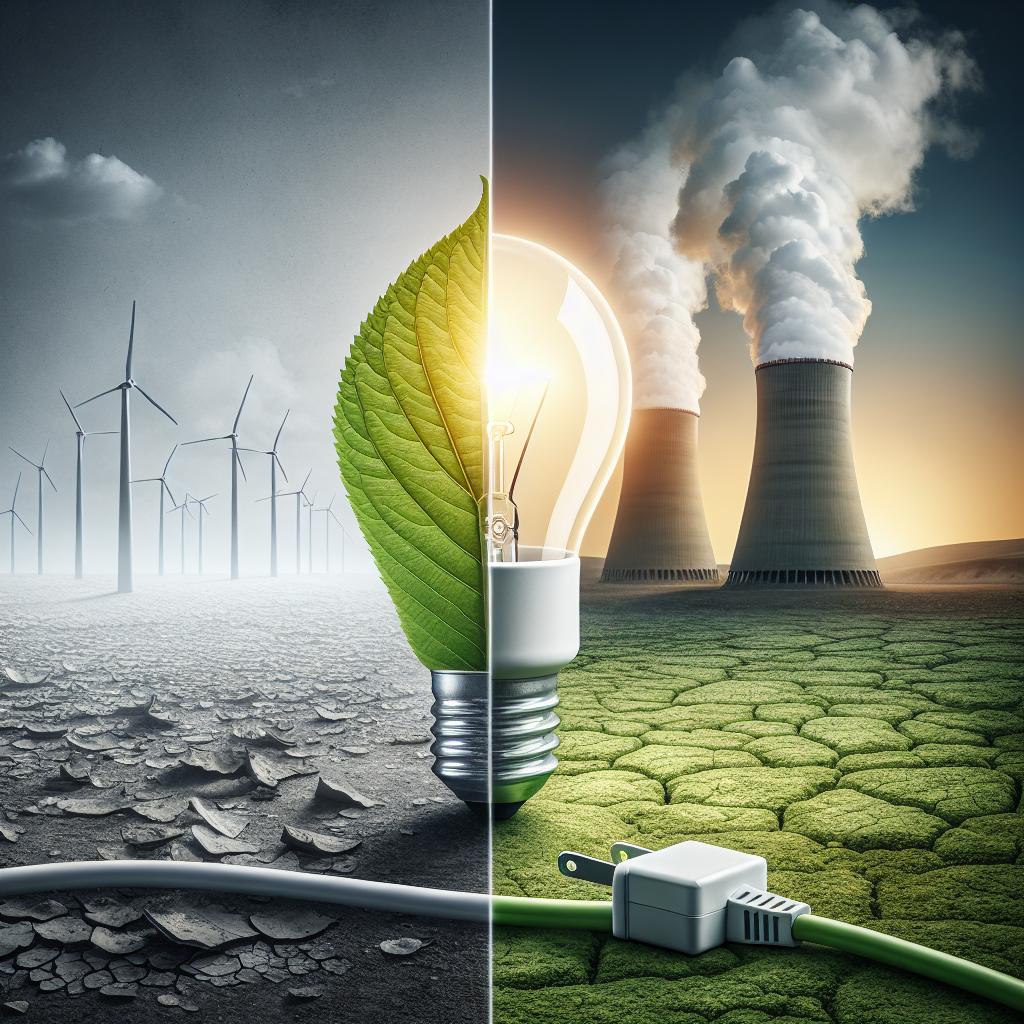Nuclear Power: A Green Energy Source or Environmental Hazard?
In the quest for sustainable and eco-friendly energy sources, nuclear power has long been a contentious topic. Proponents laud its ability to generate large amounts of electricity with minimal greenhouse gas emissions, while detractors point to the risks, including catastrophic accidents and the challenge of managing radioactive waste. As the world grapples with climate change and the need to transition away from fossil fuels, the debate over nuclear power’s role in our energy future has never been more relevant.
The Case for Nuclear Power as a Green Energy Source
1. Low Greenhouse Gas Emissions
One of the most compelling arguments for nuclear power is its low greenhouse gas emissions. Unlike coal, oil, and natural gas, nuclear reactors do not produce carbon dioxide while generating electricity. According to the Intergovernmental Panel on Climate Change (IPCC), the lifecycle emissions of nuclear power are comparable to those of renewable energy sources such as wind and solar. Considering the urgency of reducing global carbon emissions to mitigate climate change, nuclear power offers a viable, low-carbon alternative to fossil fuels.
2. High Energy Density
Nuclear energy boasts an incredibly high energy density. A small amount of uranium can produce an immense amount of energy compared to fossil fuels. For instance, one kilogram of uranium-235 can release energy equivalent to burning around 1.5 million kilograms of coal. This high energy density means that nuclear power plants require less fuel and produce less waste relative to the amount of electricity generated.
3. Reliability and Base Load Power
Unlike some renewable energy sources that are intermittent (e.g., solar and wind), nuclear power plants can provide a steady and reliable supply of electricity. They can operate continuously for long periods, making them ideal for providing base load power – the minimum level of demand on an electrical grid over a span of time. This reliability is crucial for maintaining the stability of the power grid and ensuring a continuous energy supply.
The Risks and Challenges of Nuclear Power
1. Nuclear Accidents
The potential for catastrophic accidents is perhaps the most significant concern associated with nuclear power. High-profile disasters such as Chernobyl in 1986 and Fukushima in 2011 have highlighted the severe consequences of nuclear accidents. These events resulted in massive releases of radioactive materials, long-term environmental contamination, and significant human health impacts. While advancements in reactor design and safety protocols have reduced the likelihood of such accidents, the risk cannot be entirely eliminated.
2. Radioactive Waste Management
Another major challenge is the management of radioactive waste. Nuclear reactors produce spent fuel and other radioactive materials that remain hazardous for thousands of years. Safe and secure disposal of this waste is essential to prevent environmental contamination and protect human health. While some countries have developed long-term storage solutions, such as deep geological repositories, the issue remains unresolved in many parts of the world.
3. High Costs and Economic Viability
Nuclear power plants are expensive to build, maintain, and decommission. The high upfront capital costs and long construction times can make nuclear power less economically attractive compared to other energy sources. Additionally, changes in energy policy and market dynamics, such as the falling costs of renewable energy technologies, can impact the economic viability of nuclear power projects.
The Role of Nuclear Power in a Sustainable Energy Future
Given the strengths and weaknesses of nuclear power, its role in a sustainable energy future is complex and multifaceted. Some experts argue that nuclear power is essential for achieving deep decarbonization of the energy sector, particularly in countries with high energy demands and limited renewable energy potential. Others advocate for a transition to a fully renewable energy system, emphasizing the potential risks and long-term challenges associated with nuclear power.
Ultimately, the decision to include nuclear power in the energy mix will depend on a range of factors, including national energy policies, economic considerations, technological advancements, and public acceptance. Policymakers must carefully weigh the benefits and risks, considering both the immediate and long-term implications for the environment, public health, and energy security.
FAQs
1. Is nuclear power a renewable energy source?
No, nuclear power is not considered a renewable energy source because it relies on finite uranium resources. However, it is classified as a low-carbon energy source due to its minimal greenhouse gas emissions during electricity generation.
2. How safe are modern nuclear reactors?
Modern nuclear reactors are designed with advanced safety features and multiple layers of protection to prevent accidents. While the risk of a catastrophic event is significantly lower than in the past, it cannot be entirely eliminated.
3. What happens to nuclear waste?
Nuclear waste is managed through a combination of storage and disposal methods. Spent fuel is initially stored in cooling pools and then transferred to dry cask storage. Long-term disposal solutions include deep geological repositories that isolate the waste from the environment for thousands of years.
4. How does nuclear power compare to renewable energy sources?
Nuclear power provides a reliable and continuous supply of electricity with low greenhouse gas emissions, making it a valuable complement to intermittent renewable energy sources like solar and wind. However, it also comes with higher costs, safety risks, and waste management challenges.
5. Can nuclear power help combat climate change?
Yes, nuclear power can contribute to reducing greenhouse gas emissions and combating climate change by providing a low-carbon alternative to fossil fuels. Its role in a sustainable energy future will depend on a range of factors, including economic viability, technological advancements, and public acceptance.
In conclusion, nuclear power presents both opportunities and challenges as a green energy source. While it offers significant benefits in terms of low greenhouse gas emissions and reliable electricity generation, the risks associated with nuclear accidents and radioactive waste management cannot be ignored. A balanced and informed approach is essential for determining the role of nuclear power in a sustainable and environmentally responsible energy future.

